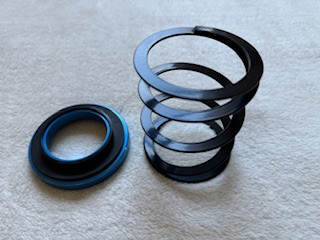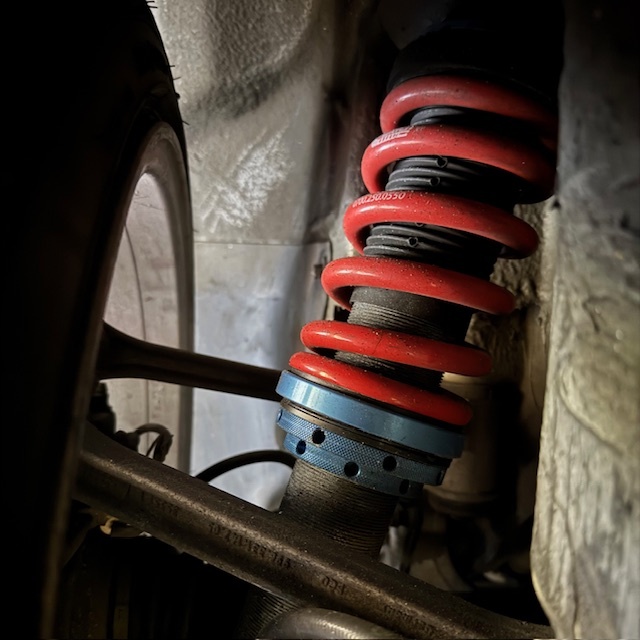Helper Springs
Mar 18th 2025

Not all of our applications use a helper spring, but when it comes to spring specifics, the helper spring has been one of the most misunderstood areas that we’ve seen. If you’ve ever wondered before or thought you may know, we’re here to detail that for you. What is a helper spring? Typically, a helper spring will be a smaller, thinner spring that will be used in conjunction with the suspension’s main spring; a helper spring is never used by itself. The helper spring can sit on top or bottom of the main spring and will serve the same function. Some springs have a “helper” section built into the spring so that a two-spring system will not be necessary.
What is the purpose of a helper spring?
This is where the real confusion comes in. We hear a lot the assumption that the lighter, thinner spring is used in the coilover to soak up the smaller road bumps so that the main spring doesn’t have to hit hard causing the suspension to be ultra-stiff for smaller road imperfections. When discussing coilover options similar to ours this assumption could not be further from the truth. The helper spring is not to be confused with a tender spring that may be used in a dual rate setup; we’re specifically referring to helper springs like used on ours and many other manufacturer’s coilovers.
The main purpose for the helper spring is to keep the main spring properly seated against the suspension upper or lower spring seat. This becomes particularly important when weight is taken off one or more corners of the vehicle. This is common when going into driveways or inclines at an angle. Typically, one corner will extend, or droop, and the helper spring will expand to hold the main spring in position. This leads to the next misunderstood aspect of the helper spring’s purpose...
Something must be wrong because the spring is fully compressed!
Again, not true at all. With the weight of the vehicle on the suspension the helper spring or helper section of a spring will be fully compressed. This means that the coils will be touching each other. This is completely normal and the helper is functioning properly. Many people believe there is a problem with the spring if this is the case but there should be no need to worry, the spring is working properly. As mentioned above, when weight is taken off one or more corners the helper spring will expand and push/hold the main spring in position. When weight comes back down onto that corner the helper spring will become fully compressed once again.
You will generally see helper springs on our suspensions that do not have an adjustable lower bracket. The only way to lower the ride height is to position the spring perch high or low on the threaded body. Generally you will see more decompressed helper with a lower ride height while the car is off the ground. In many cases, you will end up turning the perch so that the helper compressed while the car is off the ground too. This will rely solely on the slighter short shock body and spring squish for your lowered ride height. If you aren't after a big drop, you likely wont need to engage the helper to assist.
For reference, here is a picture of our 911 with the clubsport suspension, on the ground. Off the ground, we have roughly 3/4" of decompressed helper visible:

TLDR, "My helper spring is completely compressed when my car is on the ground." It's supposed to be.

